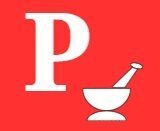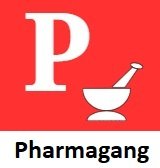GPAT Syllabus is very vast. GPAT 2017 examination for admission to M.PHARM programme will be held on 28 January 2017 by AICTE. About 25000 Students appear in this exam each year.
We are giving name of chapters from GPAT syllabus, for each subject. Original GPAT syllabus contains topics under each chapter and is much longer.
if you want to download GPAT syllabus, Detailed official GPAT syllabus pdf can be downloaded directly and saved as PDF
Download gpat Syllabus as PDF: http://aicte-gpat.in/Documents/GPATSyllabus-Updated.pdf
Introduction to Physical pharmacy
Matter, Properties of Matter
Micromeretics and Powder Rheology
Surface and Interfacial Phenomenon
Viscosity and Rheology
Dispersion Systems
Complexation
Kinetics and Drug Stability
Importance of microbiology in pharmacy
Structure of bacterial cell; Classification of microbes and their taxonomy:
Identification of Microbes:
Control of microbes by physical and chemical methods:
Sterilization:
Immunology and Immunological Preparations:
Genetic Recombination:
Antibiotics
Introduction to pharmaceutical jurisprudence & ethics
Pharmaceutical Legislations:
An elaborate study of Acts
A brief study of the Acts
A brief study of the various Prescription/Non-prescription Products. Medical/Surgical accessories,
diagnostic aids, appliances available in the market.
Introduction to dispensing and community pharmacy
Prescription:
Principles involved and procedures adopted in dispensing of:
Incompatibilities:
Community Pharmacy:
Organization and Structure of hospital pharmacy:
Hospital Formulary:
Drug Store Management and Inventory Control:
Drug distribution Systems in Hospitals:
Central Sterile Supply Unit and their Management:
Manufacture of Sterile and Non-sterile Products:
Drug Information Services:
Records and Reports:
Pharmacoepidemiology:
Nuclear Pharmacy:
Importance of unit operations in manufacturing, Stoichiometry:
Unit processes
Fluid Flow:
Heattransfer:
Evaporation:
Distillation:
Drying:
Size Reduction:
Mixing:
Filtration and Centrifugation:
Crystallization:
Dehumidification and Humidity Control:
Refrigeration and Air Conditioning:
Material of Construction:
Material Handling Systems:
Corrosion:
Plant location:
Industrial Hazards and Safety Precautions:
Automated Process Control Systems
Dosages Forms, designing & evaluation
Liquid Dosages Forms:
Semisolid Dosage Forms:
Suppositories:
Extraction and Galenical Products:
Blood Products and Plasma Substitutes:
Pharmaceutical Aerosols:
Ophthalmic Preparations:
Cosmeticology and Cosmetic Preparations:
Capsules:
Micro-encapsulation:
Tablets:
Coating of Tablets:
Parenteral Products:
Surgical products:
Packaging of Pharmaceutical Products:
Designing of dosage forms:
Performance evaluation methods:
Biopharmaceutics & Pharmacokinetics
Introduction to biopharmaceutics:
Pharmacokinetics:
Clinical Pharmacokinetics:
Bioavailability and bioequivalence
Inorganic pharmaceutical & medicinal chemistry
Importance of inorganic compoundsin pharmacy and medicine
Gastrointestinal Agents:
Major Intra- and Extra-cellular Electrolytes:
Essential and Trace Elements:
Topical Agents:
Gases and Vapors:
Dental Products:
Miscellaneous Agents:
Pharmaceutical Aids Used in Pharmaceutical Industry
Physical Chemistry and its importance in pharmacy
Acids, Bases and Buffers:
Inorganic Radiopharmaceuticals:
Importance of basic fundamentals of physical chemistry in pharmacy:
The Liquid State:
Solutions:
Thermodynamics:
Thermochemical equations; Phase rule; Adsorption:
Photochemistry:
Kinetics:
Quantum Mechanics:
Organic Chemistry and its importance in pharmacy
Importance of fundamentals of organic chemistry in pharmaceutical
Stereochemistry:
Stereoselective and stereospecific reactions; Structure, Nomenclature,Preparation and Reactions
Nucleophilic and Electrophilic Aromatic Substitution Reactions:
Elimination reactions; Conservation of Orbital Symmetry and Rules:
Neighboring group effects; Catalysis by transition metal complexes;Heterocyclic Compounds:
Biochemistry
Biochemistry in pharmaceuticalsciences:
Enzymes:
Co-enzymes:
The Citric Acid Cycle:
Lipids Metabolism:
Biological Oxidation:
Metabolism of ammonia and nitrogen containing monomers:
Purine biosynthesis:
Biosynthesis of Nucleic Acids:
Mutation:
Genetic Code and Protein Synthesis:
Medicinal Chemistry
Basic Principles:
Drug metabolism and Concept of Prodrugs; Principles of Drug Design(Theoretical Aspects):
Synthetic Procedures, Mode of Action, Uses, Structure Activity Relationships including Physicochemical Properties of the Classes of Drugs:
Autacoids:
Steroidal Drugs:
Drugs acting on the central nervous system:
Diuretics; Cardiovascular drugs:
Thyroid and Anti thyroid drugs; Insulin and oral hypoglycemic agents:Chemotherapeutic Agents used in bacterial, fungal, viral, protozoal, parasitic and other infections.Pharmaceutical Aids.
Microbial Transformations:
Enzyme Immobilization:
Pharmaceutical Analysis
Different techniques of pharmaceutical analysis, Preliminaries and definitions:
Fundamentals of volumetric analysis:
Acid Base Titrations:
Oxidation Reduction Titrations:
Precipitation Titrations:
Gravimetric Analysis:
Non-aqueous titrations:
Complexometric titrations:
Miscellaneous Methods of Analysis:
Extraction procedures including separation of drugs from excipients
Conductometry:
Coulometry:
Polarography:
Amperometry:
Chromatography:
The Theoretical Aspects, Basic Instrumentation, Elements of Interpretation of Spectra, and Applications (quantitative and qualitative) of the Analytical Techniques:
Quality assurance:
Pathophysiology of common diseases; Basic Principles of Cell Injury and Adaptations:
Basic Mechanisms involved in the process of inflammation and repair:
Immunopathophysiology
Pathophysiology of Common Diseases
Fundamentals of general pharmacology
Pharmacology of Peripheral Nervous System
Pharmacology of Central Nervous System
Pharmacology of Cardiovascular System
Drugs Acting on the Hemopoietic System
Drugs acting on urinary system
Autacoids
Drugs Acting on the Respiratory System
Drugs acting on the Gastrointestinal Tract
Pharmacology of Endocrine System
Chemotherapy
Principles of Toxicology
Basic Concepts of Pharmacotherapy
Important Disorders of Organs, Systems and their Management: Cardio-vascular disorders
CNS Disorders:
Respiratory disease
Gastrointestinal Disorders
Endocrine Disorders
Infectious Diseases ,HematopoieticDisorders- Anemias,
Joint and Connective tissue disorders.
Neoplastic Diseases . Therapeutic Drug Monitoring, Concept of Essential Drugsand Rational Drug use.
Sources of Drugs:
Classification of Drugs:
Study of medicinally important plants belonging to the families
Cultivation, Collection, Processing and Storage of Crude Drugs
Quality Control of Crude Drugs
Introduction to Active Constituents of Drugs
Systematic Pharmacognostic study of the followings:
Carbohydrates and derived products
Lipids
Resins
Tannins
VolatileOils
Phytochemical Screening
Fibers
GLYCOSIDE CONTAINING DRUGS:
Saponins
Cardioactive glycosides
Anthraquinone cathartics
Others
ALKALOID CONTAINING DRUGS:
Pyridine-piperidine
Tropane
Quinoline and Isoquinoline
Indole
Imidazole
Steroidal
Alkaloidal Amine
Glycoalkaloid
Purines
Studies of Traditional Drugs:
General Techniques of Biosynthetic Studies and Basic Metabolic Pathways/
Biogenesis:
Brief introduction to biogenesis ofsecondary metabolites of pharmaceutical importance.
Terpenes
Carotenoids
Glycosides
Alkaloids
Lignans, quassanoids and flavonoids. Role of plant-based drugs on National economy
A brief account of plant based industries and institutions involved in work on medicinal and aromatic plants in India. Utilization and production of phyto-constituents
Utilization of aromatic plants and derived products
World-wide trade in medicinal plants and derived products
Plant Tissue Culture:
Marine pharmacognosy:
Natural allergens and photosensitizing agents and fungal toxins. Herbs as health foods. Herbal cosmetics.
Standardization and quality control of herbal drugs, WHO guidelines for the standardization of herbal drugs
Download detailed GPAT Official Syllabus PDF 29 pages from here: http://aicte-gpat.in/Documents/GPATSyllabus-Updated.pdf

